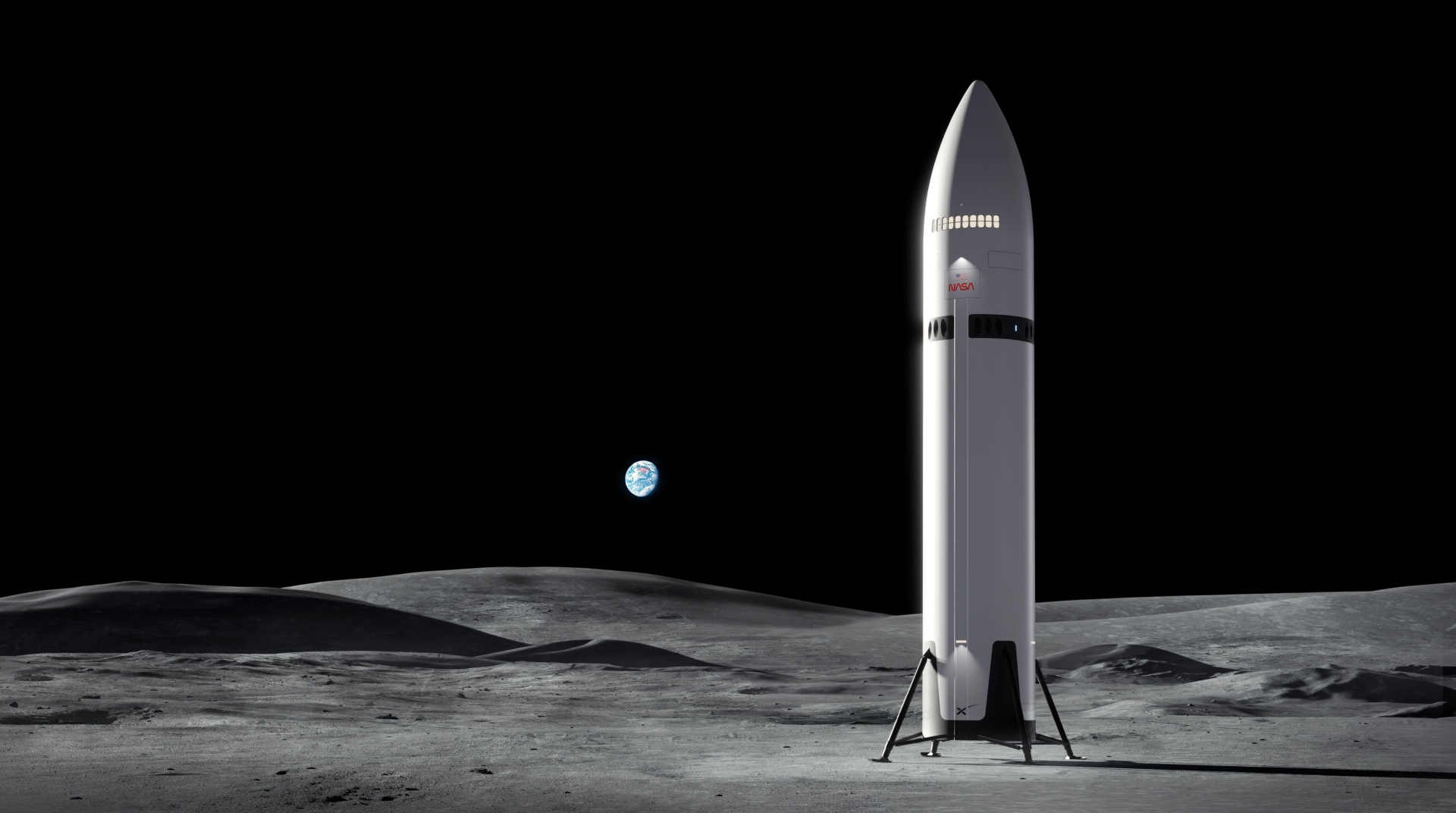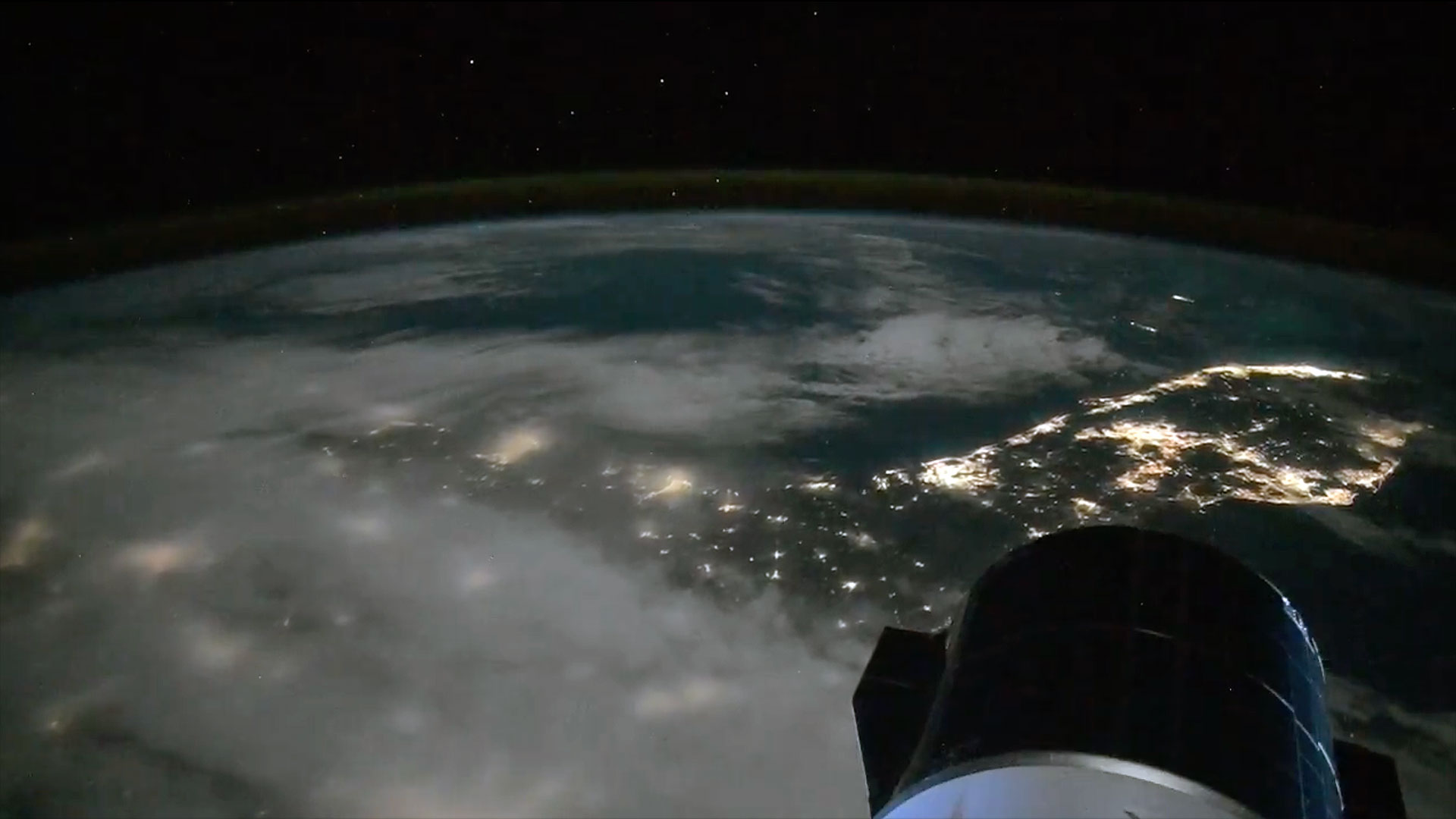SpaceX could lose contract for Artemis 3 astronaut moon-landing mission, acting NASA chief says: 'The problem is, they're behind'
"I'm gonna open up the contract. I'm gonna let other companies compete with SpaceX."

The first crewed moon landing in more than half a century may not be pulled off by SpaceX after all.
In April 2021, NASA awarded Elon Musk's company a $2.9 billion contract to provide the first crewed lunar lander for the agency's Artemis program. That vehicle, a modified upper stage of SpaceX's Starship megarocket, is supposed to land astronauts on the moon for the first time on the upcoming Artemis 3 mission.
But NASA isn't satisfied with the pace of Starship's development and is therefore shaking things up, acting agency chief Sean Duffy announced on Monday (Oct. 20).
"I love SpaceX; it's an amazing company. The problem is, they're behind. They've pushed their timelines out, and we're in a race against China," Duffy said on Monday morning, during an appearance on CNBC's "Squawk Box."
"The president and I want to get to the moon in this president's term, so I'm gonna open up the contract," he added. "I'm gonna let other space companies compete with SpaceX, like Blue Origin."
Blue Origin, which was founded by Amazon's Jeff Bezos, won an Artemis Human Landing System contract of its own in 2023, an award worth $3.4 billion. The company plans to fulfill that deal with its Blue Moon lander, which was originally expected to make its crewed lunar debut on the Artemis 5 mission.
Musk voiced skepticism that Blue Origin could speed up its timeline enough to be ready for a crewed moon mission before SpaceX.
Breaking space news, the latest updates on rocket launches, skywatching events and more!
"Blue Origin has never delivered a payload to orbit, let alone the moon," the world's richest person said via X on Monday, qualifying that to "useful payload" in a follow-up post. (Blue Origin's huge New Glenn rocket carried a prototype of the company's Blue Ring spacecraft to Earth orbit on its first — and so far, only — launch this past January.)
Artemis 3's timeline has shifted to the right several times over the past few years, and not just because Starship is still in the testing phase; issues with spacesuits, NASA's Orion capsule and other tech have also played a role. (Orion will carry Artemis astronauts to lunar orbit, where they'll meet up with the lander that will deliver them to the surface.)
The launch date was originally targeted for late 2024 but was pushed back to 2025, September 2026 and then mid-2027.
And NASA is now apparently eyeing an even later timeline: In Monday's "Squawk Box" interview, Duffy suggests that 2028 is the target for Artemis 3.
The Artemis program has one launch under its belt — that of Artemis 1, which successfully sent an uncrewed Orion to and from lunar orbit in late 2022.
NASA is now gearing up for Artemis 2, which will launch four people on a 10-day journey around the moon next year. That mission remains on track to launch as early as February, Duffy said on Monday.
SpaceX's Starship, meanwhile, has launched on 11 suborbital test flights to date. The most recent two liftoffs, which took place on Aug. 26 and Oct. 13, respectively, were fully successful.
As Duffy noted, China has moon plans of its own: The nation plans to land astronauts on Earth's nearest neighbor by 2030 and is making serious progress toward achieving that goal. No humans have touched the lunar surface since NASA's Apollo 17 astronauts did so in December 1972.

Michael Wall is a Senior Space Writer with Space.com and joined the team in 2010. He primarily covers exoplanets, spaceflight and military space, but has been known to dabble in the space art beat. His book about the search for alien life, "Out There," was published on Nov. 13, 2018. Before becoming a science writer, Michael worked as a herpetologist and wildlife biologist. He has a Ph.D. in evolutionary biology from the University of Sydney, Australia, a bachelor's degree from the University of Arizona, and a graduate certificate in science writing from the University of California, Santa Cruz. To find out what his latest project is, you can follow Michael on Twitter.
You must confirm your public display name before commenting
Please logout and then login again, you will then be prompted to enter your display name.
